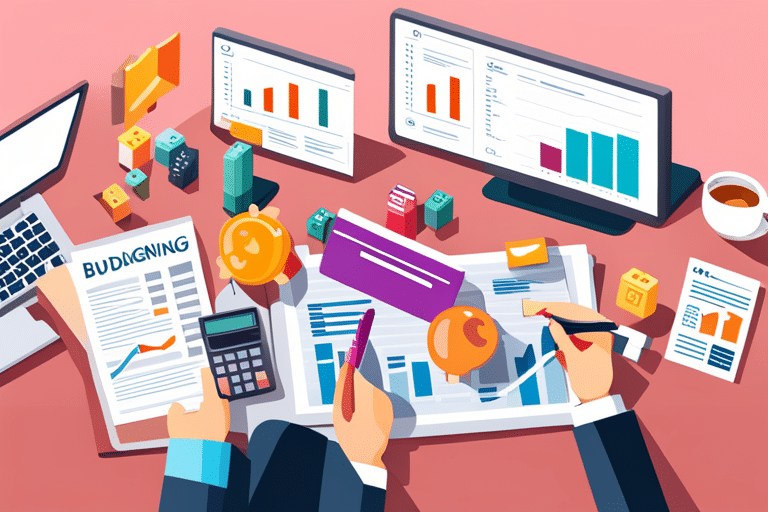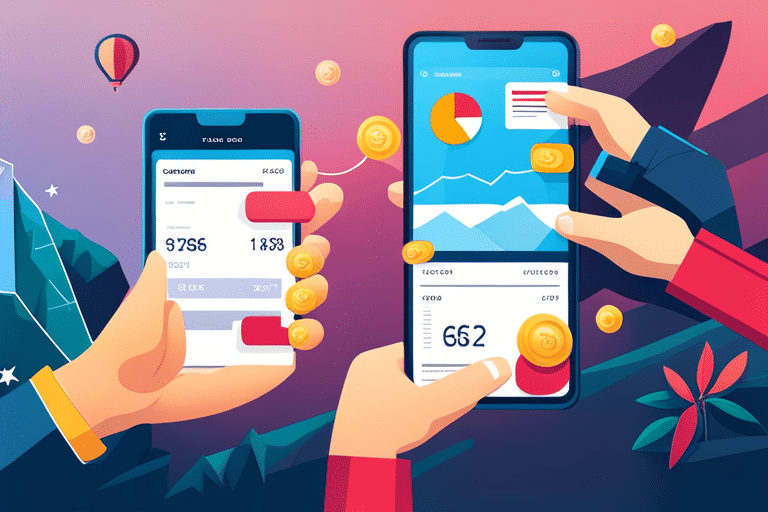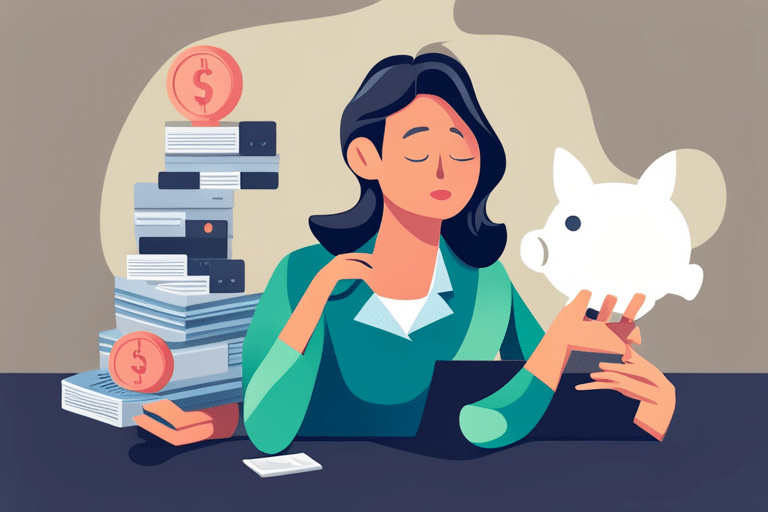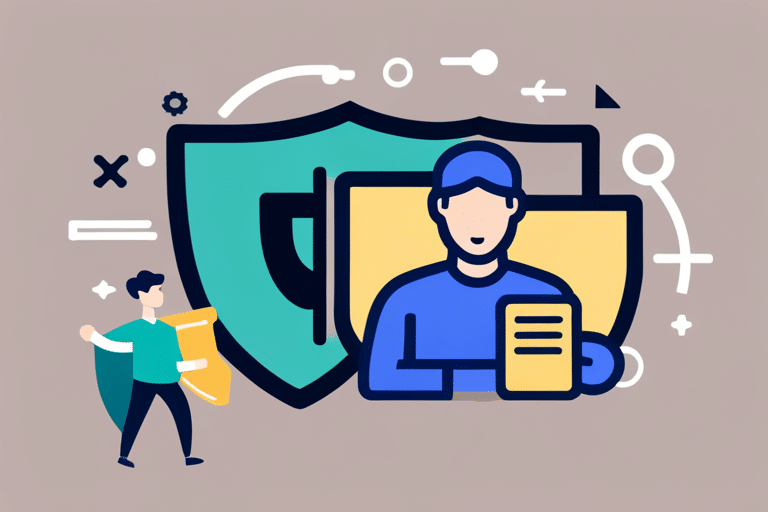Are you ready to master the art of credit card management? It’s time to step up your game and develop healthy habits that will lead you on a path to financial success.
In this article, we’ll guide you through the ins and outs of credit cards, showing you how to set a budget, choose the right card for your needs, and establish a payment plan that works for you.
Get ready to take control of your credit destiny and watch your score soar!
Key Takeaways
- Familiarize yourself with common credit card fees, such as annual fees and late payment penalties, to avoid unnecessary expenses.
- Track your spending habits regularly to understand where your money is going.
- Prioritize essential purchases by identifying your financial goals and making conscious choices.
- Be mindful of your credit card limits and avoid maxing them out.
Understanding Credit Card Basics

Understanding the basics of credit cards can help you develop healthy financial habits. So, let’s dive right in!
First things first: credit card fees. These sneaky little charges can pop up when you least expect them, like that surprise bill for a gym membership you signed up for but never used (oops!). By familiarizing yourself with common fees, such as annual fees or late payment penalties, you can avoid unnecessary expenses and keep more money in your pocket.
Next on the agenda is understanding credit limits. Think of it like a speed limit sign on the highway—except instead of getting a ticket, going over your credit limit can lead to hefty fines and damage to your credit score. So stay within your means and make sure to track your spending to ensure you don’t go overboard.
Setting a Budget and Sticking to It

Hey, you! Ready to take control of your finances?
In this discussion, we’ll dive into the importance of tracking your spending habits, so you can see where all that money is going (hint: it might be those daily coffee runs).
We’ll also talk about prioritizing essential purchases, because let’s face it – sometimes we just need to treat ourselves.
And last but not least, we’ll tackle the art of avoiding unnecessary debt, because nobody wants to be drowning in bills.
Tracking Spending Habits
To keep tabs on your spending habits, you’ll want to start tracking your credit card purchases regularly.
It’s like playing detective, but instead of solving crimes, you’re solving the mystery of where your money goes!
Think of it as a fun challenge to uncover hidden spending patterns and become the master of your financial destiny.
Grab a notebook or use an app that lets you categorize expenses – this way, you can easily see how much you’re spending on things like dining out, shopping sprees, or online subscriptions.
By keeping track of every purchase, no matter how small, you’ll gain valuable insight into your spending habits and be able to create a smart and realistic spending plan that aligns with your goals.
Prioritizing Essential Purchases
When it comes to prioritizing essential purchases, you need to take a step back and evaluate what items or expenses are truly necessary for your daily life. It’s easy to get caught up in the excitement of buying the latest gadgets or trendy clothes, but mastering your finances means knowing when to splurge and when to save.
Start by identifying your financial goals – whether it’s saving for a dream vacation or paying off debt – and use that as a guide in determining what purchases are essential versus non-essential. Remember, being mindful of your spending doesn’t mean depriving yourself of all luxuries; it simply means making conscious choices that align with your priorities.
By prioritizing essential purchases, you can make progress towards your financial goals while still enjoying the things that bring you joy.
And speaking of financial goals, one important aspect is avoiding unnecessary debt…
Avoiding Unnecessary Debt
Take a moment to evaluate your spending habits and make sure you’re avoiding unnecessary debt. It’s like walking a tightrope – too much debt and you’ll fall, but with responsible borrowing, you can soar high!
One way to avoid unnecessary debt is by keeping an eye on your credit card limits. Don’t max them out just because you can; instead, use them wisely and only spend what you can afford to pay back. Remember, credit cards are not free money!
Another tip is to be mindful of your purchases. Do you really need that fancy gadget or designer outfit? Think twice before swiping that card.
Choosing the Right Credit Card for You

So you’ve decided to take the plunge and get yourself a credit card, huh? Well, buckle up because we’re about to dive into the exciting world of card perks and benefits.
From cashback rewards to travel miles, credit cards have all sorts of cool features that can make your spending feel oh-so-rewarding.
But before we get ahead of ourselves, let’s not forget about everyone’s favorite topic: interest rates comparison! Because let’s face it, finding a credit card with a low interest rate is like stumbling upon a hidden treasure chest full of savings.
Card Perks and Benefits
As you explore different credit card options, don’t overlook the card perks and benefits that could save you money and enhance your lifestyle. Card rewards and cashback offers are like little treasures waiting to be discovered.
Imagine earning points for every dollar you spend, which can then be redeemed for exciting rewards like travel vouchers or gift cards to your favorite stores. And let’s not forget about those sweet cashback offers – getting money back on your purchases is like winning a small lottery!
These perks not only make using your credit card more enjoyable but also help stretch your hard-earned dollars further. So when comparing credit cards, make sure to consider the perks they offer and choose one that aligns with your spending habits and goals.
Now that you’re aware of all the amazing perks awaiting you, let’s dive into the next section: interest rates comparison.
Interest Rates Comparison
When comparing credit cards, it’s important to consider the interest rates they offer and choose one that aligns with your financial goals. The interest rate on your credit card can have a significant impact on your overall balance and how quickly you can pay off your debt.
So, buckle up and let’s dive into the exciting world of credit card interest rates!
First things first, let’s talk about balance transfer options. If you’re carrying a balance on another high-interest credit card, finding a card with a low or even 0% introductory APR for balance transfers can be a game-changer. It allows you to consolidate your debts onto one card and save money on interest payments.
Now, let’s get down to business – finding the best interest rate for you! Look for cards that offer competitive rates based on your creditworthiness. Remember, the higher your credit score, the better chance you have at snagging those low-interest deals.
Establishing a Payment Plan

First, make sure you have a clear payment plan in place to establish healthy credit card habits. It’s important to take control of your finances and avoid falling into the debt trap. By establishing a payment schedule, you can stay on top of your credit card bills and avoid late fees. Remember to manage your credit utilization as well, by keeping your balances low compared to your available credit limit. This will help improve your credit score and show lenders that you are responsible with your money. To help you visualize the impact of managing your payments, take a look at the table below:
| Month | Minimum Payment | Total Balance |
|---|---|---|
| Jan | $50 | $1000 |
| Feb | $50 | $900 |
| Mar | $60 | $800 |
| Apr | $60 | $700 |
By staying organized and making timely payments, you can gradually reduce your balance and improve your financial health.
Now that you’ve established a payment plan, let’s move on to the next step: monitoring your credit card spends.
Monitoring Your Credit Card Spends

Now that you’ve got a payment plan in place, it’s important to keep an eye on your credit card spends. Monitoring your credit card activity is like being the captain of a ship sailing through the sea of financial responsibility. Ahoy! Set sail on these tips to navigate your way towards mastering healthy credit card habits:
-
Track Your Spending: Keep a record of every transaction and review it regularly. It’ll help you stay aware of where your money is going and prevent any surprises.
-
Utilize Credit Card Rewards: Take advantage of those sweet rewards by using your credit card for everyday purchases. Earn points or cashback to treat yourself later.
-
Manage Credit Card Utilization: Keep your balances low and try not to max out your cards. This will help maintain a healthy credit utilization ratio, which can positively impact your credit score.
-
Stay Alert for Fraudulent Activity: Regularly check your statements for any unauthorized charges or suspicious transactions. Report them immediately to protect yourself from fraud.
Avoiding Late Payments and Penalties

To avoid late payments and penalties, make sure to always pay your credit card bill on time. Not only will this help you avoid unnecessary fees, but it can also have a positive impact on your credit score. Late payments can lower your score and make it harder for you to get approved for loans or credit in the future. So, how can you ensure that you never miss a payment? One strategy is to set up automatic payments from your bank account. This way, the minimum amount due will be paid automatically each month, reducing the risk of forgetting or being late. Another helpful tool is setting up payment reminders on your phone or calendar. With these simple steps, you’ll be well on your way to avoiding late fees and improving your credit score.
| Strategies for Avoiding Late Payments | Benefits |
|---|---|
| Set up automatic payments | Reduces risk of forgetting |
| Use payment reminders | Helps you stay organized |
| Pay attention to due dates | Ensures timely payments |
Managing Credit Card Debt

So, you’ve got some credit card debt and you’re feeling a little overwhelmed? Don’t worry, we’ve got your back!
In this discussion, we’ll go over some awesome debt repayment strategies that will have you saying goodbye to those pesky balances in no time.
Plus, we’ll show you how to avoid falling into those sneaky credit card traps and give you tips on building up that shiny credit score of yours.
Get ready to take charge of your finances like a boss!
Debt Repayment Strategies
Paying more than the minimum monthly payment can help you pay off credit card debt faster. It’s time to take control of your finances and develop a solid strategy for debt repayment. Here are some tips to get started:
-
Debt Consolidation: Consider consolidating your debts into one loan or credit card with a lower interest rate. This can make it easier to manage your payments and save on interest charges.
-
Negotiating with Creditors: Reach out to your creditors and see if you can negotiate a lower interest rate or a reduced settlement amount. They may be willing to work with you if they see that you’re making an effort to pay off your debts.
-
Create a Budget: Make a detailed budget that includes all of your monthly expenses and income. This will help you see where you can cut back on spending and allocate more money towards debt repayment.
-
Snowball Method: Start by paying off the smallest balance first, then move onto the next one. As each debt is paid off, roll over the payment amount into the next debt, creating a snowball effect.
Avoiding Credit Card Traps
Avoiding credit card traps starts with carefully reading and understanding the terms and conditions of your credit card agreement. It may sound tedious, but trust me, it’s worth it! Think of it as unlocking a treasure chest filled with credit card rewards while avoiding those sneaky credit card fees.
Once you’ve familiarized yourself with the terms and conditions, you’ll be equipped to navigate the credit card landscape like a pro. Keep an eye out for any hidden fees or charges that could eat into your hard-earned rewards. Understanding how interest rates work and knowing when they kick in can save you from unexpected surprises.
Remember, not all rewards are created equal. Some cards offer cashback on certain purchases, while others provide travel points or discounts at your favorite retailers. Choose a card that aligns with your spending habits and goals.
Building a Credit Score
Building a credit score requires consistent and responsible use of credit. It may seem daunting, but fear not! Here are some tips to help you on your credit-building journey:
-
Credit utilization: Keep your credit card balances low compared to your available credit limit. Aim for a utilization rate of 30% or less.
-
Credit history length: The longer you’ve had credit accounts open, the better it is for your score. So don’t close old accounts just yet!
-
On-time payments: Paying your bills on time shows lenders that you’re reliable and trustworthy. Set up automatic payments to avoid any slip-ups.
-
Mix it up: Having different types of credit, like credit cards and loans, can boost your score. Just make sure you manage them responsibly.
Now that you know these secrets, get out there and start building your credit score with confidence! Remember, small steps today lead to big rewards tomorrow.
Building Your Credit Score

To improve your credit score, you should focus on using your credit card responsibly and making timely payments. But there’s more to it than just that! You need to pay attention to two key factors: credit card utilization and credit history length.
Let’s start with utilization. This refers to the percentage of your available credit that you’re actually using. To keep things healthy, aim for a utilization rate below 30%. So if you have a $1,000 limit, try not to use more than $300.
Now let’s talk about history length. The longer you’ve had a credit card, the better it looks on your report. So don’t be quick to close old accounts! Keep them active and in good standing.
Protecting Yourself From Fraud and Identity Theft

Make sure you regularly monitor your bank statements and credit reports for any suspicious activity to protect yourself from fraud and identity theft. It’s important to stay vigilant in this digital age where scammers are always looking for ways to steal your personal information.
Here are a few tips to help you navigate the world of fraud prevention and identity protection:
- Be cautious when sharing personal information online or over the phone.
- Use strong, unique passwords for all your accounts and enable two-factor authentication whenever possible.
- Regularly update your antivirus software and keep your devices protected against malware.
- Educate yourself about common scams and learn how to recognize red flags.
Remember, protecting yourself from fraud is an ongoing process. By following these simple steps, you can stay one step ahead of potential threats while enjoying peace of mind knowing that your identity is safeguarded.
Stay safe out there!
Developing Long-Term Healthy Credit Habits

It’s important to establish a solid foundation for your credit by consistently practicing responsible financial behaviors. Building long-term financial stability and improving your creditworthiness may seem daunting, but with the right mindset and habits, it can be an exciting journey towards financial empowerment.
Firstly, make sure to pay your bills on time. Late payments can have a negative impact on your credit score. Set up automatic payments or reminders to help you stay organized.
Secondly, keep your credit utilization low. Aim to use only a small percentage of your available credit limit. This shows lenders that you are responsible and not overly reliant on credit.
Next, regularly check your credit report for any errors or discrepancies. If you find any inaccuracies, dispute them immediately to maintain the accuracy of your credit history.
Lastly, avoid opening too many new accounts at once. Each application triggers a hard inquiry and can temporarily lower your score.
Frequently Asked Questions
Can I Use My Credit Card to Make Cash Withdrawals?
Yes, you can use your credit card for cash withdrawals. However, keep in mind that this may come with fees and high interest rates. Also, using your credit card for international cash withdrawals may incur additional charges.
How Often Should I Check My Credit Card Statement for Errors?
You should check your credit card statement regularly to catch any errors. It’s like putting on sunscreen – a quick, simple habit that protects you from the sunburn of financial mistakes.
Are There Any Benefits to Having Multiple Credit Cards?
Having multiple credit cards can offer advantages like earning different credit card rewards and improving your credit card utilization. It’s important to use them responsibly, though, to develop healthy credit card habits.
What Should I Do if My Credit Card Is Lost or Stolen?
If your credit card is lost or stolen, report it immediately to your bank. They can cancel the card and prevent unauthorized transactions. Stay on top of your finances to develop healthy credit card habits!
How Long Does It Take to Rebuild a Damaged Credit Score?
Rebuilding a damaged credit score is like planting a garden. It takes time and patience, but with healthy financial habits, your credit score can blossom and recover over time. Stay consistent!
Conclusion
Congratulations! You’ve reached the end of this credit card journey, and now you have all the tools to develop healthy credit habits.
Just like a skilled artist who carefully selects their paintbrushes and colors, you can choose the right credit card that suits your needs.
Remember, it’s all about setting a budget and sticking to it, monitoring your spends like a detective on a thrilling case, and protecting yourself from fraud like a superhero with an impenetrable shield.
With these habits in place, you’ll be building your credit score and achieving financial success in no time!
Keep up the great work!

